Introduction

Welcome to the enchanting city of Delhi, where the rich tapestry of history unfolds before your eyes. With its rich cultural heritage and countless architectural wonders, Delhi is a treasure trove for history enthusiasts and curious travelers alike. From the majestic Qutub Minar to the iconic Red Fort, each historical monument tells a unique story and offers a glimpse into Delhi’s glorious past. Join us on a journey as we explore the historical wonders of Delhi and unravel the secrets of this captivating city. Let’s dive into the majestic world of Delhi’s historical wonders!
Introduction to Delhi’s historical wonders

Delhi, the capital city of India, is a treasure trove of historical wonders that showcase the rich heritage and cultural legacy of the region. From ancient monuments to grand palaces, Delhi’s historical wonders offer a glimpse into the glorious past of this captivating city. Each architectural marvel tells a unique story, reflecting the architectural styles and influences of different eras. As you embark on your journey through Delhi’s historical wonders, be prepared to be dazzled by the beauty and grandeur that awaits you.
Significance of exploring Delhi’s rich tapestry

Exploring Delhi’s rich tapestry of historical wonders holds immense significance. It allows you to immerse yourself in the rich heritage and cultural legacy of the city. By exploring these architectural marvels, you can gain a deeper understanding of the region’s history, art, and architecture. It provides an opportunity to appreciate the craftsmanship and architectural styles of different eras. Additionally, visiting these historical wonders allows you to connect with the past, fostering a sense of pride and admiration for the cultural heritage of Delhi.
Qutub Minar: An Architectural Marvel

With its soaring height and intricate design, Qutub Minar is a true architectural marvel. Standing tall at 73 meters, this UNESCO World Heritage Site showcases the mastery of Indian craftsmanship. Built in the 12th century, the minaret is adorned with intricate carvings, inscriptions, and balconies. Its unique architectural style, combining elements of Islamic and Indian design, makes it a captivating attraction for history enthusiasts and architecture lovers alike. A visit to Qutub Minar is a journey through time, exploring the rich heritage of Delhi.
History and architecture of Qutub Minar
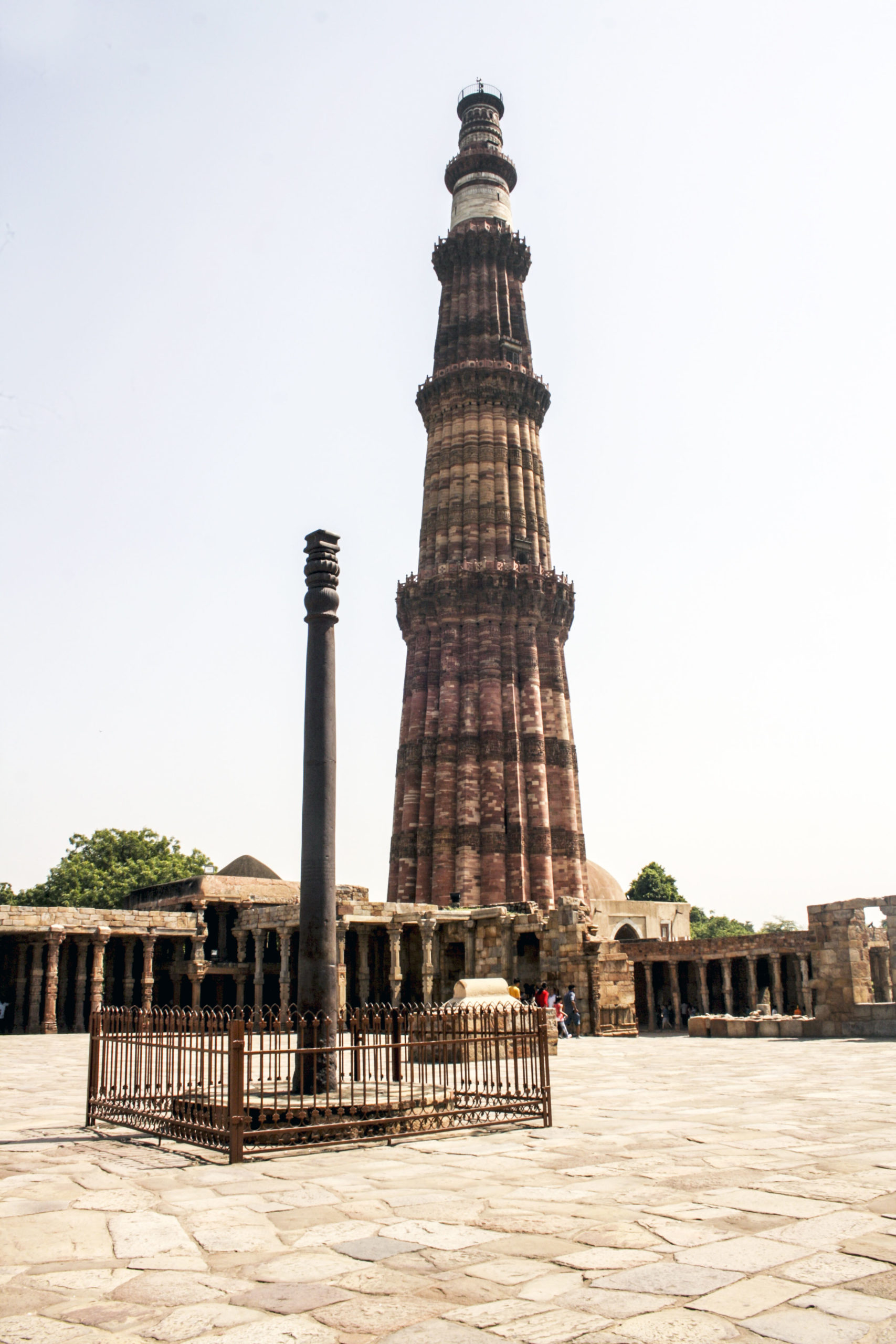
The history of Qutub Minar dates back to the 12th century when it was built by Qutub-ud-din-Aibak, the first Muslim ruler of Delhi. The minaret was constructed to celebrate the victory of Muslims over the Hindu Rajputs. The architecture of Qutub Minar showcases a blend of Islamic and Indian styles, with its intricate carvings and detailed inscriptions. Its five distinct storeys and balconies add to its grandeur. The red sandstone and marble used in its construction further enhance its beauty.
Fascinating facts about Qutub Minar

- Qutub Minar is the tallest brick minaret in the world, standing at a height of 238 feet (73 meters).
- The minaret is adorned with intricate carvings, including verses from the Quran and geometric patterns.
- It took more than 20 years to complete the construction of Qutub Minar.
- The minaret has survived various natural disasters and invasions over the centuries and still stands tall as a testament to Delhi’s rich history.
- The iron pillar near the minaret is famous for its rust-resistant properties and has stood the test of time for over 1,600 years.
Red Fort: A Symbol of Power and Grandeur

The Red Fort in Delhi is a symbol of power and grandeur. Built in the 17th century by Emperor Shah Jahan, it served as the residence of Mughal emperors for nearly 200 years. The fort’s imposing red sandstone walls and intricate architecture are a testament to the Mughal empire’s opulence. The fort is a UNESCO World Heritage Site and a popular tourist attraction, offering a glimpse into India’s rich history and architectural brilliance. Exploring the Red Fort is a must for anyone visiting Delhi.
Historical background of the Red Fort

The Red Fort in Delhi holds a fascinating historical background. It was built in the 17th century by Emperor Shah Jahan as the royal residence of the Mughal Emperors. The fort became a symbol of their power and grandeur. Over the years, it witnessed significant historical events, such as the coronation of kings, the British occupation, and the declaration of Indian independence. Today, the Red Fort stands as a testament to the rich history of Delhi and the Mughal Empire.
Key features and attractions of the Red Fort

When you visit the Red Fort, you will be captivated by its impressive architecture. The fort is known for its imposing red sandstone walls and intricately carved marble structures. Some of the key attractions within the fort include the Diwan-i-Am (Hall of Public Audience), where the Mughal Emperors used to address the public; the Diwan-i-Khas (Hall of Private Audience), with its exquisite marble decorations; and the Zenana (Women’s Quarters), which provides a glimpse into the private lives of the royal ladies. Don’t miss the Light and Sound Show in the evening, which brings the history of the Red Fort to life.
Humayun’s Tomb: A Fusion of Persian and Indian Architecture
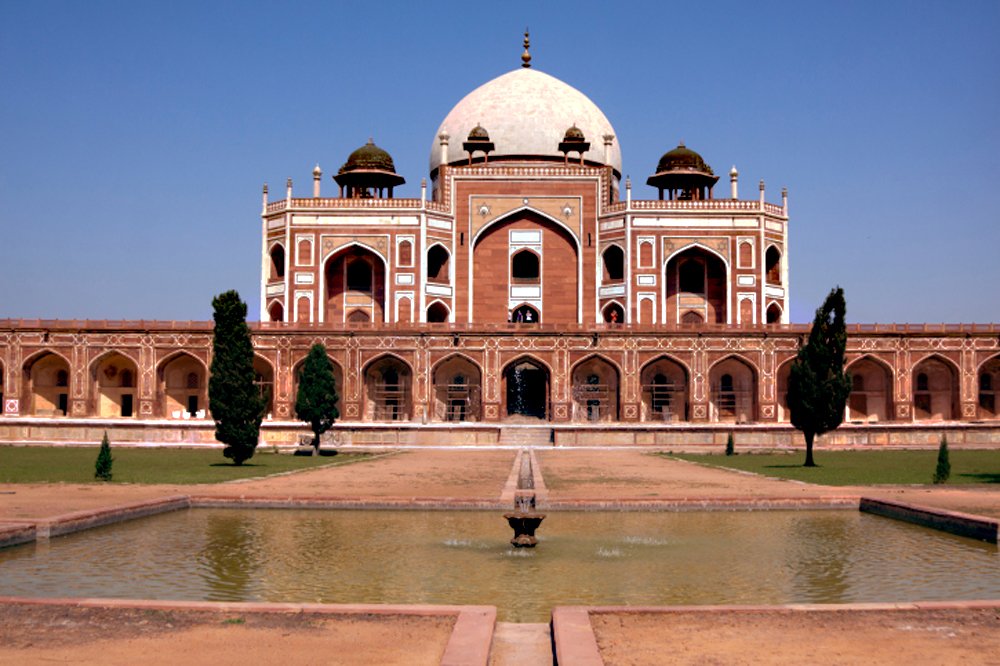
Humayun’s Tomb stands as a testament to the fusion of Persian and Indian architectural styles. Built in 1570, this majestic tomb showcases intricate details and symmetrical design. The blend of red sandstone and white marble creates a striking visual contrast. The tomb is surrounded by beautiful gardens, adding to its serene ambiance. Inside, you’ll find the tomb chamber of Emperor Humayun, adorned with intricate tile work and calligraphy. The fusion of Persian and Indian influences in the architecture makes Humayun’s Tomb a truly unique and awe-inspiring sight.
History and significance of Humayun’s Tomb
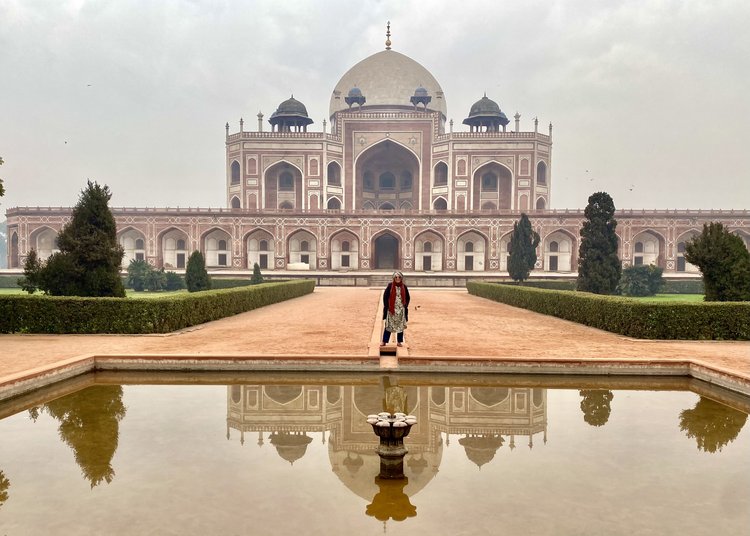
Humayun’s Tomb, built in 1570, holds great historical and cultural significance. It was commissioned by Empress Bega Begum, the widow of Emperor Humayun, to honor his memory. This magnificent tomb marks a significant transition in Mughal architecture, combining Persian and Indian design elements. It served as an inspiration for the later architectural masterpiece, the Taj Mahal. The tomb also houses several other Mughal emperors and their family members. Today, Humayun’s Tomb is recognized as a UNESCO World Heritage Site, showcasing the rich history and architectural prowess of the Mughal Empire.
Design elements and architectural beauty of Humayun’s Tomb
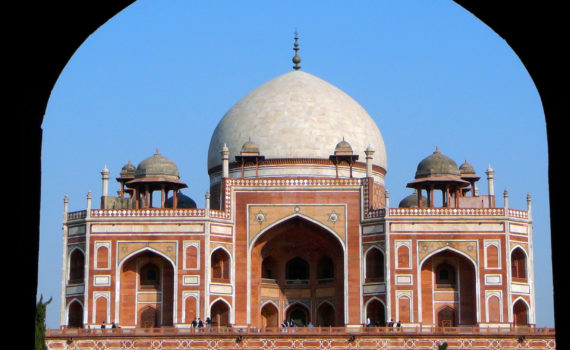
Humayun’s Tomb showcases a stunning fusion of Persian and Indian architectural styles. Its grand design consists of a symmetrical layout, a large central dome, beautiful chhatris (or umbrella-shaped domes), and intricate geometric patterns. The intricate carvings on the walls, the use of red sandstone, and the Persian-inspired double domes add to its aesthetic appeal. The tomb’s immense size and meticulous detailing make it a visual marvel, attracting visitors from around the world.
Jama Masjid: India’s Largest Mosque
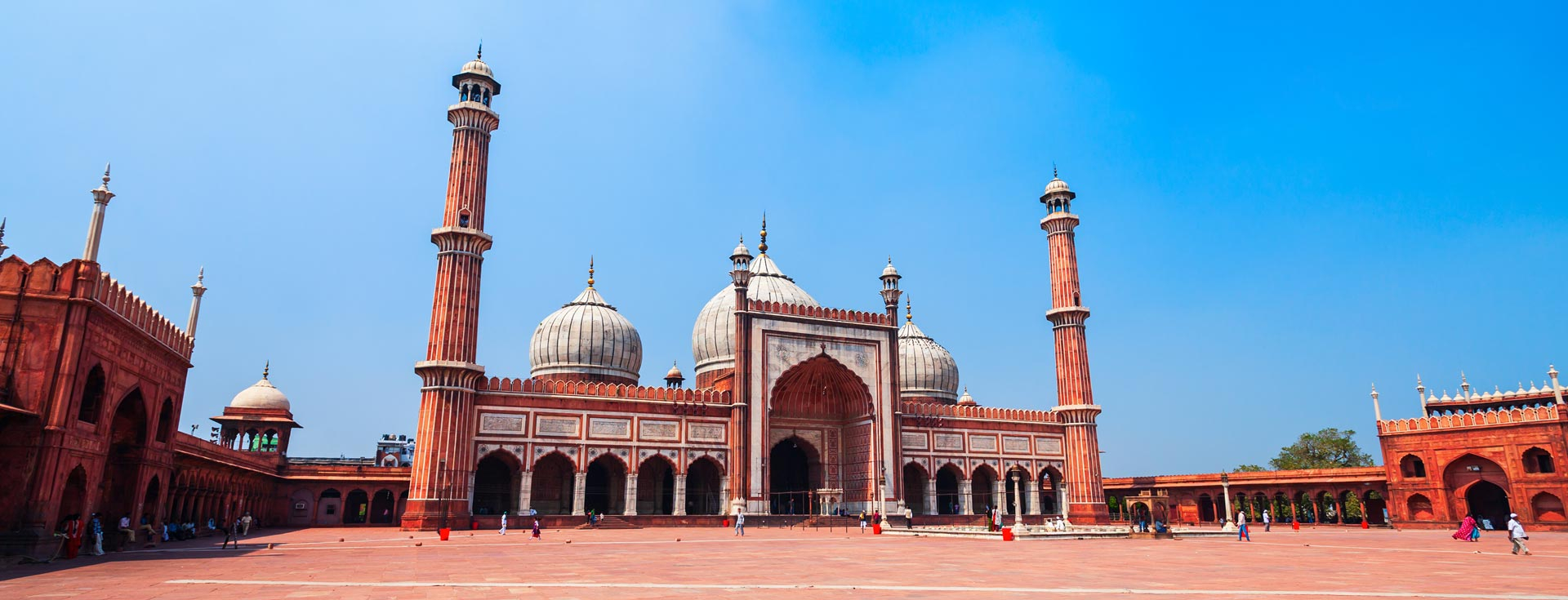
Jama Masjid is India’s largest mosque and a significant religious landmark in Delhi. Built by Emperor Shah Jahan in the 17th century, this majestic mosque can house up to 25,000 worshippers. With its imposing red sandstone and white marble architecture, intricate carvings, and stunning domes, it showcases the opulence of Mughal design. The mosque serves as a place of worship, attracting both locals and tourists who come to admire its architectural grandeur and immerse themselves in its spiritual ambiance.
Historical context of Jama Masjid

Jama Masjid holds immense historical significance in Delhi. It was built by Emperor Shah Jahan in the 17th century as a symbol of Mughal power and religious harmony. The construction of this grand mosque took six years and involved the labor of over 5,000 workers. Jama Masjid was commissioned as a place of prayer and worship, providing a serene sanctuary for the people of Delhi. Its historical context highlights the rich cultural heritage of the Mughal era and the diversity of religious expression in India.
Architectural details and cultural importance of Jama Masjid
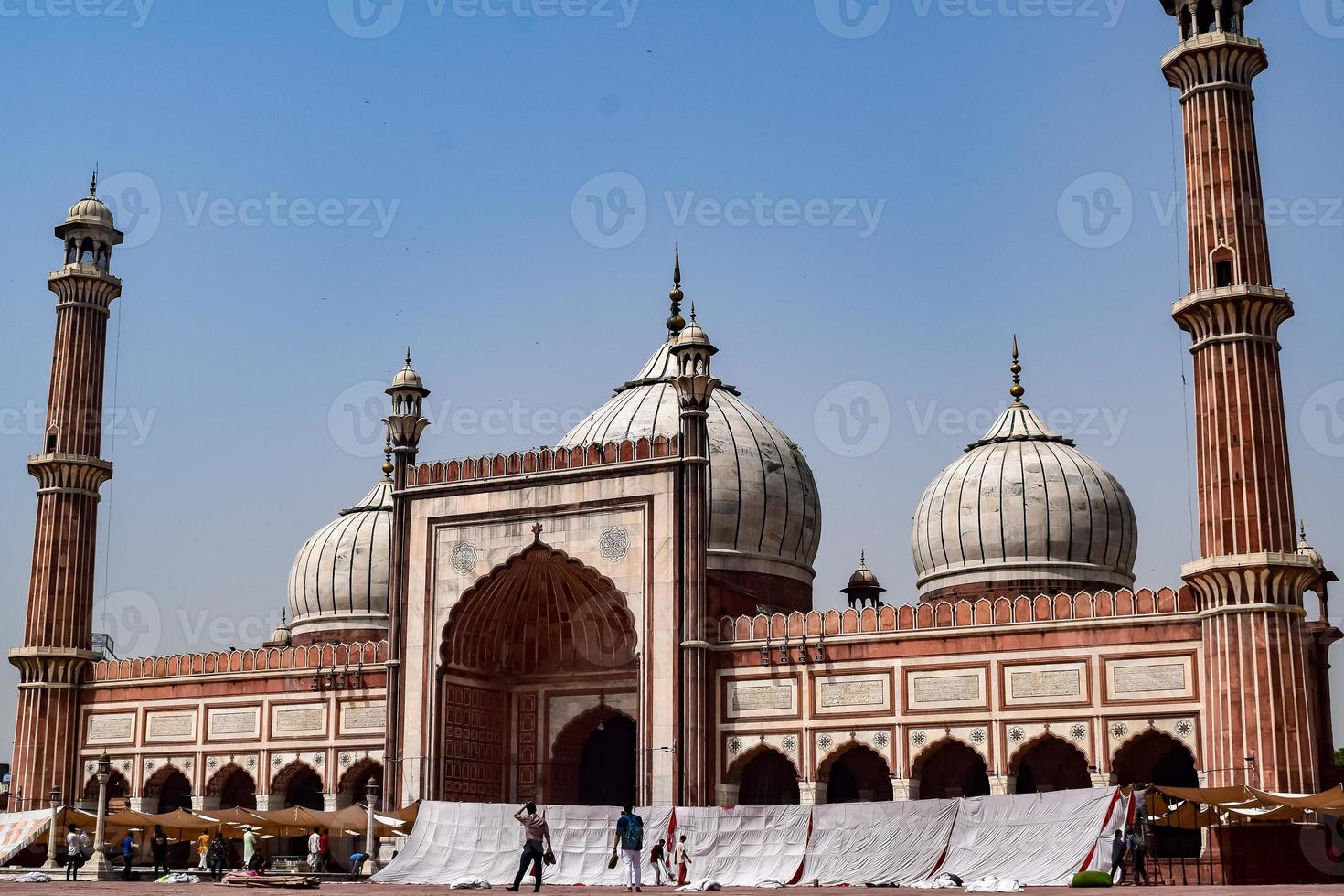
Jama Masjid is a stunning example of Mughal architecture. With its red sandstone and white marble construction, it showcases intricate details and delicate carvings. The massive courtyard can accommodate thousands of worshippers, and the central dome is an impressive sight. Jama Masjid not only serves as a place of worship but also plays a significant role in Delhi’s cultural fabric. It is a symbol of religious harmony, attracting people from various backgrounds and promoting a sense of unity.
India Gate: Memorializing the Martyrs

India Gate stands tall as a memorial dedicated to the Indian soldiers who sacrificed their lives in World War I and the Afghan Wars. This iconic structure in Delhi pays tribute to the bravery and courage of these martyrs. As you stand before the towering arch, you will be moved by the names inscribed on the walls, honoring the fallen heroes. It is a place of remembrance and reflection, reminding us of the sacrifices made for our nation.
History and significance of India Gate
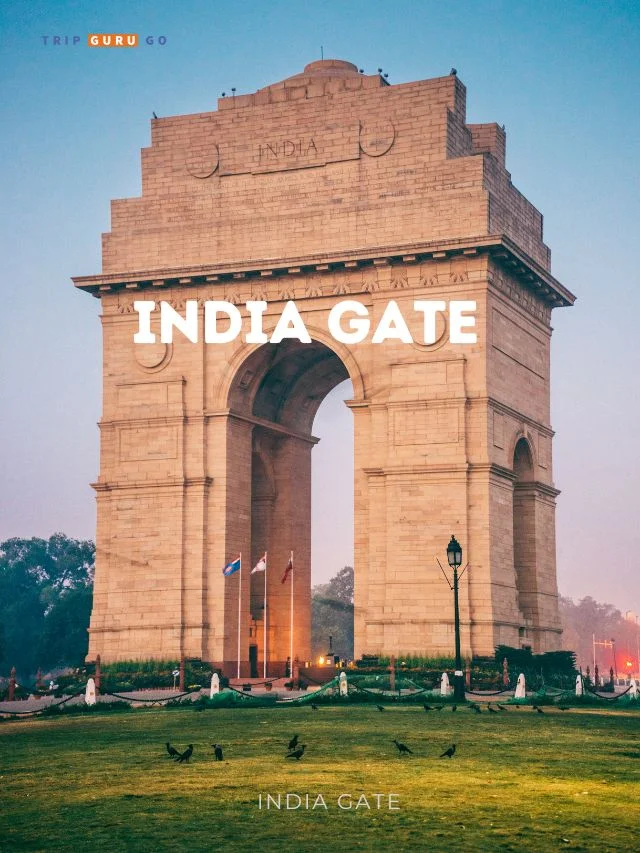
India Gate was built as a memorial to honor the Indian soldiers who lost their lives during World War I and the Afghan Wars. The foundation stone of this magnificent structure was laid in 1921, and it was completed in 1931. The towering arch symbolizes the valor and sacrifices made by these brave soldiers. The names of the soldiers are inscribed on the walls, serving as a poignant reminder of their courage and dedication. India Gate stands as a solemn tribute to their memory and is a cherished landmark in Delhi.
Attractions and events near India Gate
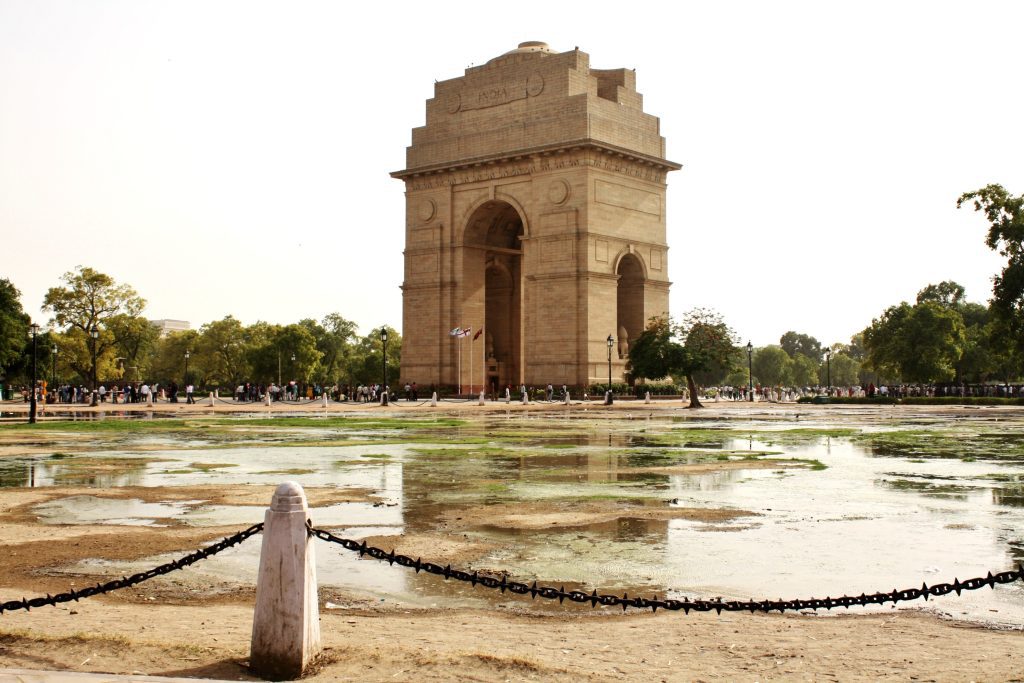
There are several attractions and events near India Gate that you can explore. Take a leisurely stroll along Rajpath and admire the beautiful views of the Presidential Palace. Visit the National War Memorial, located right next to India Gate, to pay your respects to the martyrs. Enjoy a boat ride on the nearby boating lake or have a picnic in the lush green lawns surrounding the monument. Don’t miss the Republic Day Parade held annually on January 26th, where you can experience the grandeur of India’s cultural heritage.
Conclusion

In conclusion, exploring Delhi’s rich tapestry of historical wonders is a truly remarkable experience. From the majestic Qutub Minar to the grand Red Fort, the fusion of Persian and Indian architecture in Humayun’s Tomb, and the cultural significance of Jama Masjid, each monument tells a unique story of Delhi’s glorious past. India Gate stands as a poignant memorial to the martyrs, and nearby attractions and events add to the vibrancy of the area. Embrace the opportunity to appreciate and immerse yourself in Delhi’s captivating historical heritage.
Appreciating the historical wonders of Delhi
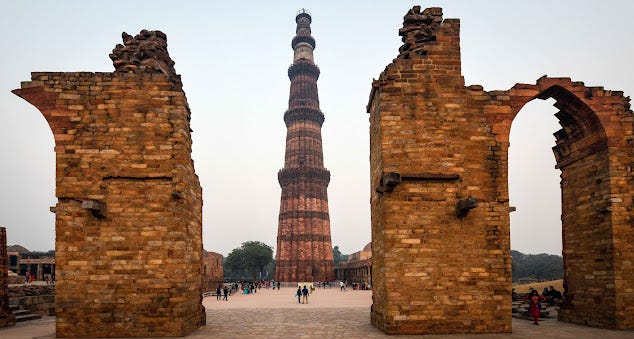
Delhi’s rich tapestry of historical wonders offers a remarkable experience that allows you to immerse yourself in the fascinating stories of the past. As you explore the majestic Qutub Minar, the grand Red Fort, the fusion of Persian and Indian architecture in Humayun’s Tomb, and the cultural significance of Jama Masjid, you will gain a deep appreciation for Delhi’s glorious history. Each monument stands as a testament to the architectural and cultural heritage of this vibrant city. Take the time to embrace and enjoy the beauty and significance of Delhi’s historical wonders.
Tips for exploring Delhi’s rich tapestry

- Plan your visit in advance to make the most of your time in Delhi. Consider visiting the historical sites early in the morning to avoid crowds.
- Hire a knowledgeable guide who can provide interesting insights and stories about Delhi’s historical wonders.
- Dress appropriately and remember to carry comfortable shoes, as there is a lot of walking involved.
- Take your time to appreciate the intricate details and architectural beauty of each monument.
- Don’t forget to try the local street food and immerse yourself in the vibrant culture of Delhi.
- Stay hydrated and carry sunscreen to protect yourself from the sun.
- Lastly, respect the historical sites by not causing any damage and following the visitor guidelines.
